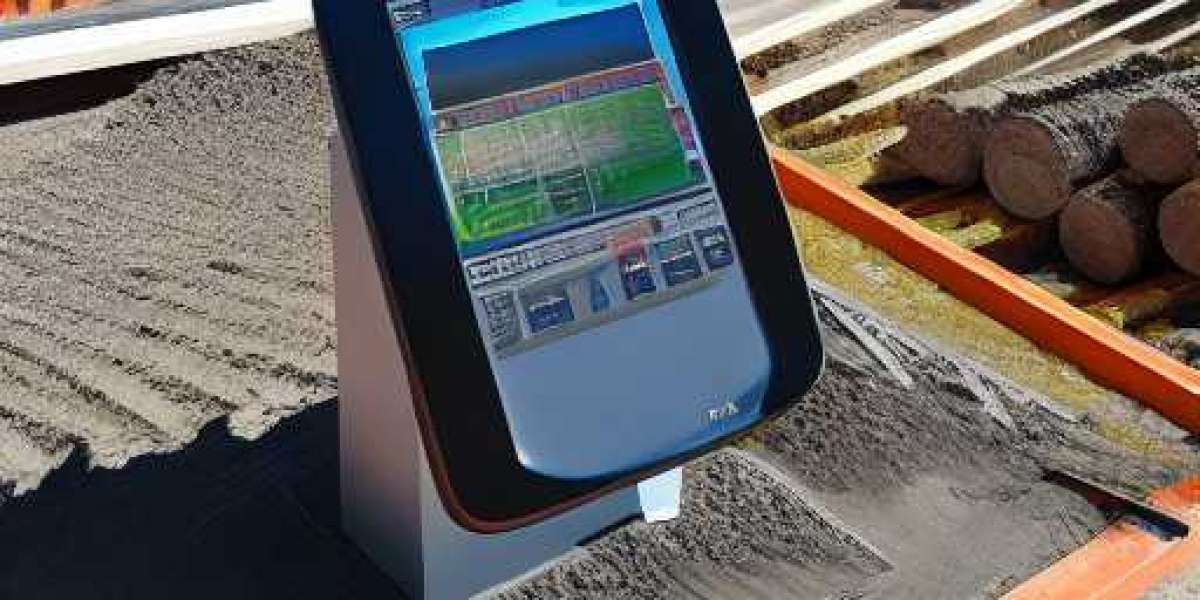In the fast-paced world of construction, innovation is the key to success. One such groundbreaking technology that has emerged in recent years is digital concrete rebar scanning. This cutting-edge technology has revolutionized the way we inspect and assess the integrity of reinforced concrete structures. By combining advanced imaging technology with powerful software algorithms, Digital Concrete Rebar Scanning has become an indispensable tool for engineers, architects, and construction professionals. We will delve into the intricacies of this technology, exploring its benefits, applications, and potential impact on the construction industry.
Understanding Digital Concrete Rebar Scanning:
Digital concrete rebar scanning involves the use of non-destructive testing methods to detect and map the reinforcement bars (rebars) within a concrete structure. Traditionally, this task was performed manually using handheld devices, which were time-consuming and often prone to errors. However, with the advent of digital scanning technology, the process has become highly efficient and accurate.
The Process of Digital Concrete Rebar Scanning:
Digital concrete rebar scanning follows a systematic process that combines hardware and software components to deliver precise results. Let's take a closer look at each step involved:
- Preparation
Before commencing the scanning process, proper preparation is crucial. This involves cleaning the concrete surface to ensure optimal contact with the scanning equipment. Any loose debris, paint, or dirt is removed to enhance the accuracy of the scan.
- Scanning
The scanning itself is performed using specialized equipment such as ground-penetrating radar (GPR) or electromagnetic induction (EMI) scanners. These devices emit signals that penetrate the concrete, allowing them to detect the presence and location of rebars. The signals bounce back to the scanner and are then processed by the software.
- Data Processing
The collected data from the scanning phase is processed using advanced software algorithms. These algorithms analyze the signals received by the scanner, interpret the data, and generate a comprehensive report. The report includes detailed information about the location, orientation, and even the diameter of the rebars within the concrete structure.
- Analysis and Interpretation
The generated report is then analyzed and interpreted by construction professionals. They can gain valuable insights into the structural integrity of the concrete elements, identifying potential issues such as corrosion, cracks, or insufficient cover. This analysis allows engineers and architects to make informed decisions regarding repairs, renovations, or design modifications.
Advantages of Digital Concrete Rebar Scanning:
Digital concrete rebar scanning offers numerous advantages over traditional methods of inspection and assessment. Let's explore some of these benefits:
- Accuracy and Precision
Digital scanning technology provides highly accurate and precise results. The advanced algorithms used in the data processing phase eliminate the potential for human error, ensuring reliable information about the rebars' position, orientation, and diameter. This level of accuracy allows engineers to make informed decisions based on reliable data.
- Time and Cost Efficiency
Compared to manual rebar detection methods, digital scanning significantly reduces the time and cost involved in the inspection process. The speed at which the scanners can collect data and the automated analysis capabilities of the software allow for swift assessment of the structural condition. This efficiency translates into cost savings and shorter project timelines.
- Non-Destructive Testing
One of the most significant advantages of digital concretes rebar scanning is its non-destructive nature. The technology enables engineers to assess the integrity of concrete structures without causing any damage. This eliminates the need for invasive techniques, such as drilling or cutting, which can compromise the structural integrity and incur additional repair costs.
- Enhanced Safety
By accurately identifying the presence and condition of rebars, digital scanning enhances safety in construction projects. Engineers can identify potential weak points or areas at risk of failure, allowing for proactive measures to be taken. This minimizes the chances of accidents or structural failures, ensuring the safety of workers and occupants.
Applications of Digital Concrete Rebar Scanning:
The versatility of digital concrete rebar and scanning extends its applications across various domains within the construction industry. Here are some notable applications:
- Structural Assessment
Digital scanning technology enables engineers to assess the structural integrity of existing concrete structures. By accurately detecting rebars and evaluating their condition, professionals can identify areas requiring repairs, reinforcements, or maintenance. This helps extend the lifespan of structures and ensures their long-term stability.
- Quality Control
During the construction phase, digital concrete rebar and scanning plays a crucial role in quality control. By verifying the correct placement of rebars and ensuring compliance with design specifications, the technology helps prevent construction defects. Early detection of errors allows for prompt rectification, minimizing rework and potential safety hazards.
- Renovation and Retrofitting
When renovating or retrofitting existing structures, it is essential to understand their internal composition and condition. Digital scanning technology provides a comprehensive assessment of the rebars, identifying any weaknesses or areas requiring reinforcement. This information guides the renovation process, ensuring the structural integrity and durability of the renovated structure.
- Design Optimization
Digital concrete rebar scanning can also aid in the design optimization of new structures. By analyzing the load-bearing capacity of existing structures and evaluating their performance, engineers can make informed decisions when designing similar projects. This data-driven approach leads to more efficient and cost-effective designs, reducing material waste and construction time.
The Future of Digital Concrete Rebar Scanning:
As technology continues to advance, the future of digital concrete rebar and scanning appears promising. Here are some potential developments that we may witness:
- Integration with Building Information Modeling (BIM)
The integration of Digital Concrete Scanning with Building Information Modeling (BIM) systems holds tremendous potential. BIM allows for the creation of detailed virtual representations of structures, including the rebar layout. By combining this information with digital scanning data, construction professionals can gain comprehensive insights into the structure's performance, facilitating accurate analysis and decision-making.
- Real-time Monitoring
Advancements in wireless communication and sensor technology may enable real-time monitoring of concrete structures. Digital scanning devices could be embedded within the construction elements, continuously collecting data on the rebars' condition. This real-time monitoring would provide immediate alerts in case of structural anomalies, facilitating prompt maintenance or repair actions.
- Artificial Intelligence (AI) Integration
The integration of artificial intelligence algorithms into digital scanning software could enhance the accuracy and efficiency of data analysis. AI algorithms can learn from vast amounts of scanning data, enabling them to detect subtle patterns, predict potential issues, and recommend optimal solutions. This integration could revolutionize the decision-making process in construction, leading to improved structural performance and reduced maintenance costs.
Conclusion:
Digital concrete rebar scanning has undoubtedly transformed the construction industry by providing accurate, efficient, and non-destructive methods for assessing reinforced concrete structures. The benefits of this technology, including increased accuracy, time and cost efficiency, enhanced safety, and its wide range of applications, make it an invaluable tool for construction professionals. As technology continues to evolve, we can expect even more advancements in digital scanning, ultimately leading to safer, more resilient, and sustainable structures in the future.








